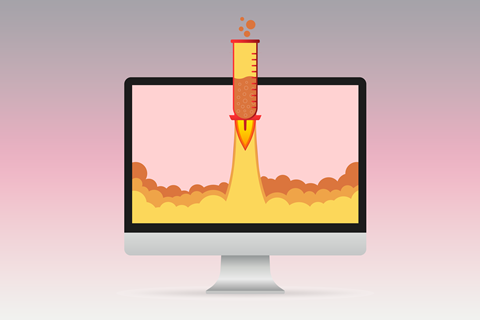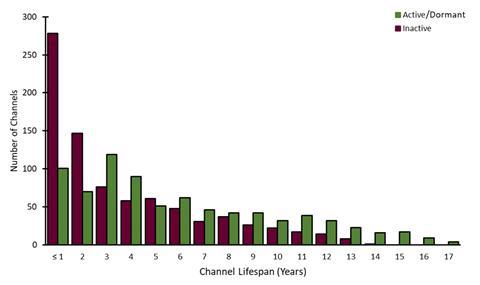The first large analysis of chemistry YouTube channels shows that the majority are made by independent content creators. The preprint, which hasn’t been peer reviewed, also reveals that members of the public with an interest in science resonate with the kinds of authentic individuals seen on channels such as NileRed, who has over 6.7 million subscribers, and Extractions&Ire, with more than 200,000 subscribers.

There has been continual growth in social media in recent years with YouTube now one of the most popular sites in the world recording over 2.5 billion users a month. A consequence of this is that the video-sharing platform has also made chemistry accessible to a wider audience, leading to an increase in channels that focus on chemistry education, revision and fun experiments.
Lewis MacKenzie, a researcher at the University of Strathclyde, UK and a co-author of the preprint, says that there’s ‘a real revolution in the way people are learning about chemistry. You know, you don’t have to pick up a dusty textbook. You don’t have to go to a lecture theatre. You can access chemistry and science on the bus or when you’re sitting on the sofa at home.’
The team at the University of Strathclyde set out to analyse all the YouTube channels that have produced chemistry content between 2005 and 2023. They used both manual searching and an algorithm to source all the chemistry YouTube channels. These were then reverified and refined to finally yield 1619 chemistry YouTube channels.
The researchers went in with ‘no expectations at all, as they were trying to establish a picture’, says MacKenzie. However, this approach has been critiqued by Martyn Poliakoff, a chemist at the University of Nottingham, UK and a presenter on the Periodic Videos YouTube channel, which has 1.6 million subscribers, who was not involved in the research. He suggests that having a hypothesis could’ve allowed further analysis such as how chemistry YouTube channels differed from the other sciences. ‘If they had a sociologist as one of the co-authors, they might have reached more interesting conclusions,’ he notes.
Analysis of the 1619 channels revealed that 84% of chemistry YouTube channels were produced by independents, who had no clear affiliations to institutions or organisations. MacKenzie noted that ‘most of these channels appear to be made by people doing it for a passion for science’.
More than 51% of the channels examined by the team were inactive and hadn’t posted a video for over a year. Another 13% were dormant, while over a third had posted a video recently.

They also observed three peaks in the creation of chemistry channels in 2007, 2011 and 2020, compared with the previous year, that the team puts down to the growth of YouTube, the popularity of smartphones and the Covid-19 pandemic, respectively. In 2019, 86 channels were created whereas 219 were set up in 2020.
Poliakoff says, ‘the general idea of chemistry getting on to social media is good because it helps spread enthusiasm about chemistry as widely as possible and one can reach people in countries where there may not be many lab facilities and so on and still inspire young people’.
The team now hopes to look at another fast-growing social media platform, TikTok, which differs from YouTube as it specialises in brief videos. MacKenzie also wants ‘to collaborate with colleagues in digital humanities and computer science to analyse things like network effects’ to see how users ‘experience a journey and how channels get recommended to you’.
References
S Gardner et al, 2024, ChemRxiv, DOI: 10.26434/chemrxiv-2024-74hhg

















No comments yet